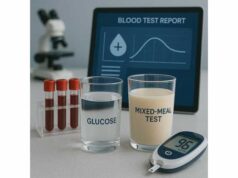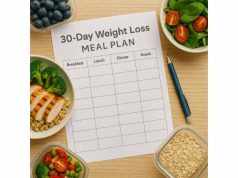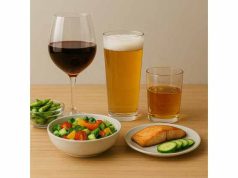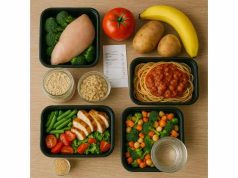
A can of soda, a packet of stevia, a teaspoon of table sugar—small choices like these add up to hundreds of calories a day. If you are trying to lose weight, it helps to understand what sugar does in your body, how non-nutritive sweeteners compare, and when each makes sense. This guide explains the science in plain terms and shows you how to use it in daily meals. If you also want a step-by-step framework for calorie targets, macros, and planning, see our pillar on calories, macros and meal planning. The aim isn’t to ban sweetness, but to use it strategically—so your diet stays satisfying, sustainable, and effective.
Table of Contents
- Sugar and sweeteners for weight loss
- Sugar vs artificial sweeteners
- What the evidence shows
- How to use sweeteners wisely
- Common mistakes to avoid
- Safety and who should avoid
- A practical action plan
- Frequently Asked Questions
Sugar and sweeteners for weight loss
Sugar is energy-dense and easy to overconsume because it hides in beverages and sauces that do not fill you up. A 12-ounce regular soda adds roughly 140 calories and about 35 grams of added sugar. Do that daily and you add close to 1,000 calories per week without gaining much satiety. For weight loss, those “quiet calories” matter more than rare desserts eaten mindfully.
Artificial and non-nutritive sweeteners (NNS)—such as sucralose, aspartame, acesulfame-K, stevia, and monk fruit—provide little to no energy. They sweeten foods and drinks at a fraction of the calories of sugar. That is their core advantage: they help you cut energy intake while keeping a sweet taste.
But sweetness is only one lever in a larger system. Weight change is governed by energy balance over time: calories in versus calories out. Many diets fail not because of one ingredient, but because total intake stays too high for the person’s needs. Sugar can push intake up; non-caloric sweeteners can help pull it down—but neither guarantees success without the broader structure of a sensible plan, adequate protein, fiber for fullness, and consistent habits.
Appetite and satisfaction are the practical bridge between “calories” and real life. Liquid sugars do a poor job of triggering fullness hormones compared with whole foods. Conversely, swapping a sugary drink for a zero-calorie version often reduces intake without making you hungrier. However, sweeteners used in low-protein, low-fiber diets can backfire if the rest of the meal has little staying power.
Your best starting point: (1) remove or reduce sugar-sweetened beverages; (2) keep sweets for occasions you’ll enjoy; (3) if a zero-calorie sweetener helps you stay on track, use it as a tool—not a license to eat more. For a broad roadmap of behavior change, goal setting, and safe pacing, review our guide to safe weight-loss basics.
In short, sugar makes it easy to overshoot your target. Artificial and non-nutritive sweeteners can help reduce calories, but they work best when paired with high-satiety meals and a plan you can keep.
Sugar vs artificial sweeteners
Here is what changes when you replace sugar with non-nutritive sweeteners:
Calories and energy density. Sugar contributes 4 calories per gram; table sugar is half glucose, half fructose. By contrast, non-nutritive sweeteners add virtually zero calories. Swapping 2 teaspoons of sugar from your coffee twice a day (~32 calories) saves about 1,000 calories per month.
Glycemic response. Sugary drinks spike blood glucose and insulin quickly, which can increase hunger later for some people. Non-nutritive sweeteners do not raise blood glucose directly. Sugar alcohols (like xylitol or erythritol) contribute some calories and can cause GI symptoms in higher amounts.
Satiety and appetite. Sweetness without calories can be a double-edged sword. For many, it reduces cravings and overall intake. For others, very sweet diet products may maintain a “sweetness preference,” making plain foods less appealing. The fix is not to force abstinence, but to build meals around protein, fiber, and water-rich foods—then use sweetness in small, deliberate ways.
Taste and satisfaction. Sugar has culinary benefits—browning, texture, mouthfeel—that artificial sweeteners do not fully replicate in baking. In drinks and yogurt, swaps are easier. You can also blend strategies: half-sugar, half-sweetener in recipes; fruit for part of the sweetness; spices (cinnamon, vanilla) to enhance flavor.
Metabolic health. Replacing sugary beverages with non-caloric options tends to improve triglycerides, reduce liver fat risk, and support weight loss indirectly by cutting calories. But if the rest of the diet is highly processed and low in nutrients, metabolic markers may not improve much.
Bottom line. Use non-nutritive sweeteners where they provide clear calorie savings and do not cause GI issues or rebound eating. Use sugar intentionally in small amounts when it meaningfully improves satisfaction, ideally alongside protein and fiber.
If you are unsure how much energy you need, set targets with our guide to daily calorie targets. Then decide where sweeteners help you hit those numbers without feeling deprived.
What the evidence shows
Research on sugar, artificial sweeteners, and weight spans randomized trials, long-term observational cohorts, and mechanistic studies. A few points cut through the noise:
1) Replacing sugar with non-caloric sweeteners usually reduces energy intake. In controlled trials where participants swap sugary beverages or sweetened yogurt for versions made with non-nutritive sweeteners, average calorie intake drops—often by 100–200 calories per day—because the swap removes energy without reducing fullness much. Over months, that can translate to modest weight loss.
2) Effects are modest but meaningful. Meta-analyses of randomized controlled trials typically find small reductions in body weight and BMI when people replace sugar with non-nutritive sweeteners in the context of an overall diet. The average change is often around 1–2 kilograms over several months—smaller than a full lifestyle program, but not trivial if the swap replaces a daily sugary drink.
3) Observational studies can conflict with trials. Large cohorts sometimes find links between diet soda intake and higher weight. These associations likely reflect “reverse causation” (people at higher risk choosing diet products) plus confounding by other lifestyle factors. When researchers randomize the swap, the calorie effect dominates and weight tends to go down, not up.
4) Sweeteners are tools, not cures. In weight-loss programs, non-nutritive sweeteners help adherence—people feel less deprived and are more likely to keep their plan. But they are not magic: if you add extra snacks because a drink had no calories, you erase the benefit.
5) Gut microbiome and cravings: interesting, not definitive. Some studies show specific sweeteners can shift gut microbes in ways that might affect glucose tolerance in susceptible people. Others show no meaningful effect in typical doses. The practical advice is simple: monitor how you feel, check your energy balance, and default to whole foods most of the time.
6) Sugar reduction improves cardiometabolic risk when it lowers calories. Cutting added sugar often reduces weight and improves triglycerides and liver enzymes. Swapping to non-caloric drinks is a high-yield move, especially if you were consuming one or more sugary beverages per day.
7) Context matters. A diet with adequate protein (about 1.6–2.2 g/kg of goal body weight for active weight loss), 25–35 grams of fiber, and plenty of water-rich foods produces better satiety. Within that context, sweetener swaps are more likely to “stick” and produce measurable changes.
For help aligning sweetness with macronutrients and satiety targets, see our overview of macro ratios and how to adjust them during a cut.
How to use sweeteners wisely
You do not need to eliminate sweetness to lose weight. You need guardrails that make high-calorie choices less convenient and low-calorie choices easier.
Focus on the “big rocks.”
- Replace daily sugary drinks with water, unsweetened tea, black coffee, or zero-calorie versions. If you miss the taste, use a wedge of citrus or a splash of diet lemonade in sparkling water.
- Keep dessert, not dessert-like snacks. A planned treat after dinner beats random cookies between meetings.
- Build meals around protein and fiber; use sweetness to finish, not to carry the meal.
Create default swaps.
- Coffee/tea: 1–2 packets of stevia or sucralose instead of 2 teaspoons of sugar (save ~32 calories).
- Yogurt: Buy plain Greek yogurt; sweeten with berries and a few drops of liquid stevia.
- Oatmeal: Mash half a banana or add cinnamon and vanilla; use a half-sugar, half-sweetener blend if needed.
- Sauces: Choose “no-sugar-added” marinara and BBQ; add smoked paprika or mustard for depth.
Use the 80/20 rule for baking. When texture matters, replace only 20–50% of the sugar with a non-nutritive sweetener, and add fruit for the rest. You preserve browning and moisture while trimming calories.
Watch sugar alcohols. Erythritol and xylitol can cause bloating or loose stools in higher doses. Test tolerance; spread intake across the day, and pair with meals.
Measure results, not ideology. Track average weight trend and how your appetite feels. If a zero-calorie swap cuts cravings and protects your calorie target, keep it. If it nudges you to snack more, rethink the context (protein/fiber at meals) or use small amounts of sugar strategically.
To pair these strategies with filling foods that keep calories in check, use our list of low-calorie, high-volume foods and build your grocery list around them.
Common mistakes to avoid
Relying on diet products without fixing meals. A diet soda with a low-protein lunch will not keep you full. Anchor meals with lean protein, fiber-rich carbs, and some fat; then use sweetness as a small add-on.
Chasing “sugar-free” labels. Some sugar-free items are still calorie-dense from refined starches or fats. Always scan the nutrition facts: calories per serving, serving size, and protein/fiber content. If it saves only 20 calories but leaves you less satisfied, it is not worth it.
Overcompensating. “I saved 200 calories in my drink, so I can have a muffin.” That trade often overshoots the savings. Keep the win; do not “spend” it mindlessly.
Ignoring liquid calories in coffee drinks and smoothies. A large sweet coffee can carry as many calories as a small meal. Ask for fewer pumps, smaller sizes, or unsweetened versions you sweeten yourself.
Using intense sweetness all day. Constantly stimulating your sweet taste can make unsweet foods less appealing. Give your palate breaks: savory breakfasts, simple salads, fruit as the sweet note in meals.
Forgetting hydration. Mild dehydration can feel like hunger. Lead with water; it supports appetite control and performance.
For more pitfalls and fixes across your whole diet, see our guide to common diet mistakes and how to correct them.
Safety and who should avoid
General safety. Regulatory agencies set acceptable daily intakes (ADIs) for approved sweeteners that are far above typical consumption. For most healthy adults, using non-nutritive sweeteners in moderate amounts is considered safe. Still, aim to keep whole, minimally processed foods as your default and use sweeteners as supportive tools.
Diabetes and blood sugar. Swapping sugary drinks for zero-calorie options usually lowers calorie intake and reduces glucose spikes. Monitor your own response if you have diabetes, especially when changing medications or meal composition.
Irritable bowel and GI sensitivity. Sugar alcohols (xylitol, sorbitol, maltitol) commonly trigger bloating, gas, or diarrhea in sensitive individuals. Erythritol is often better tolerated but can still cause issues in large amounts. Introduce slowly and pair with meals.
Pregnancy and breastfeeding. Most approved sweeteners have established ADIs that include safety margins. If you prefer to minimize them during pregnancy, prioritize water, milk, and whole fruit for sweetness and reserve diet products for occasional use.
Kidney stones and mineral balance. Some “diet” beverages are high in sodium or phosphates. If you have kidney disease or are prone to stones, choose water, unsweetened tea, or diet drinks without added phosphates; discuss individual limits with your clinician.
Allergies and rare reactions. People occasionally report headaches or aftertastes with specific sweeteners. If a product consistently causes symptoms, switch to another option or reduce frequency.
If fullness is a struggle even with smart swaps, increasing fiber can help; see our guide to daily fiber targets and food swaps for practical ideas.
A practical action plan
Here is a simple, evidence-aligned plan you can start today:
1) Remove the biggest sugar source first. For most people, that is soda, sweet tea, energy drinks, or sweetened coffee. Replace with water, unsweetened options, or a zero-calorie version. Expect a 100–300 calorie reduction per day if this was a daily habit.
2) Build your meals for satiety. Aim for 25–40 grams of protein at main meals, a fist-size portion of high-fiber carbs (beans, whole grains, fruit), and vegetables or salad. Add a thumb of healthy fats. When meals are satisfying, sweet cravings drop.
3) Use “smart sweetness” rules.
- Drinks: zero-calorie or unsweetened 90% of the time.
- Yogurt, oatmeal: fruit first, add a few drops/pinch of sweetener if needed.
- Sauces: choose no-sugar-added or dilute half-and-half with the regular version.
- Baking: reduce sugar by 25–50%; replace the rest with fruit puree and/or a non-nutritive sweetener.
4) Set a treat cadence. Plan 2–4 intentional desserts per week you truly enjoy. Portion it, savor it, and move on. Planned treats beat impulsive grazing.
5) Track the trend. Weigh 2–4 times per week and use a rolling average. If the 14-day trend is flat, adjust: remove one additional sugary item, or step down the sweetness of a daily drink.
6) Keep a “sweetness budget.” Decide where sweetness gives you the most benefit for the fewest calories. Many people choose coffee, yogurt, and a weekend dessert; they keep everything else unsweetened.
7) Reassess monthly. As your palate adapts, reduce intensity: fewer packets, half-sweet syrups, smaller portions. Your goal is not zero sweetness; it is better control with less effort.
This plan works because it attacks high-calorie sugar sources first, builds meals that keep you full, and uses sweeteners as small supports rather than the foundation of your diet.
Frequently Asked Questions
Do artificial sweeteners cause weight gain?
Most randomized trials show that replacing sugar with non-nutritive sweeteners reduces calorie intake and produces small weight losses over time. Observational links to weight gain often reflect reverse causation. In practice, sweeteners help when they replace sugar and the rest of your diet drives fullness.
Are artificial sweeteners bad for your gut?
Some studies find microbiome changes with certain sweeteners at specific doses, while others show minimal effects. Most healthy adults tolerate typical amounts without issues. If you notice bloating or discomfort, reduce the dose, switch products, or favor whole-food sweetness like fruit.
Which sweetener is best for weight loss?
The best choice is the one that helps you cut calories without side effects or rebound eating. Many people do well with stevia, sucralose, or monk fruit in drinks and yogurt. If sugar alcohols upset your stomach, choose non-caloric options and keep portions moderate.
Can I use sugar and still lose weight?
Yes—if total calories remain in a deficit. Use small amounts of sugar where it truly improves satisfaction (for example, a measured dessert) and keep daily sugary drinks and frequent sweets off your default menu. Build meals around protein and fiber to prevent overeating.
Do diet drinks increase cravings?
Responses vary. For many, diet drinks reduce cravings for sugary beverages. For others, intense sweetness can keep the sweet “dial” high. Try a two-week trial: swap one daily sugary drink for a zero-calorie option and monitor hunger, snack urges, and your weight trend.
Are sweeteners safe during pregnancy?
Approved sweeteners have acceptable daily intakes with wide safety margins. Many clinicians advise a “minimal but allowed” approach: prioritize water, milk, and whole fruit; reserve diet products for occasional use. If you are unsure, discuss specific products and amounts with your obstetric provider.
References
- Substitution of sugar-sweetened beverages with non-caloric alternatives and weight change: A systematic review of randomized trials and meta-analysis 2024 (Systematic Review)
- Association of Low- and No-Calorie Sweetened Beverages as a Replacement for Sugar-Sweetened Beverages With Body Weight and Cardiometabolic Risk: A Systematic Review and Meta-analysis 2022 (Systematic Review/Network Meta-analysis)
- Non-nutritive sweetened beverages versus water after a 52-week weight management programme: a randomised controlled trial 2024 (RCT)
- Use of non-sugar sweeteners: WHO guideline 2023 (Guideline)
- Aspartame and Other Sweeteners in Food 2025 (Regulatory/Safety)
Disclaimer
This article provides general information about nutrition and weight loss. It is not a substitute for personalized medical advice, diagnosis, or treatment. Always consult your healthcare provider before making significant dietary changes, especially if you have medical conditions, take medications, are pregnant, or are breastfeeding.
Share and follow
If this guide helped you, consider sharing it with a friend who is working on their nutrition. For more practical, research-based tips, follow us on the social network you use most.










